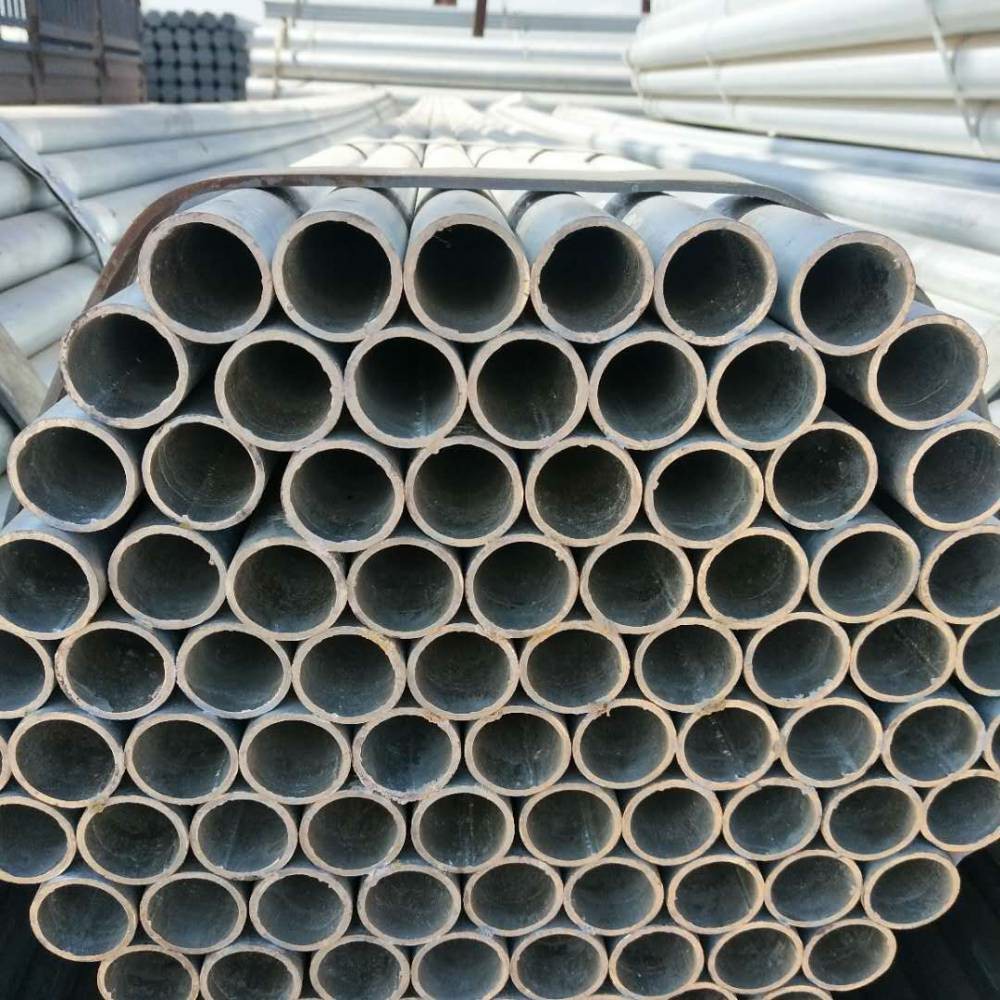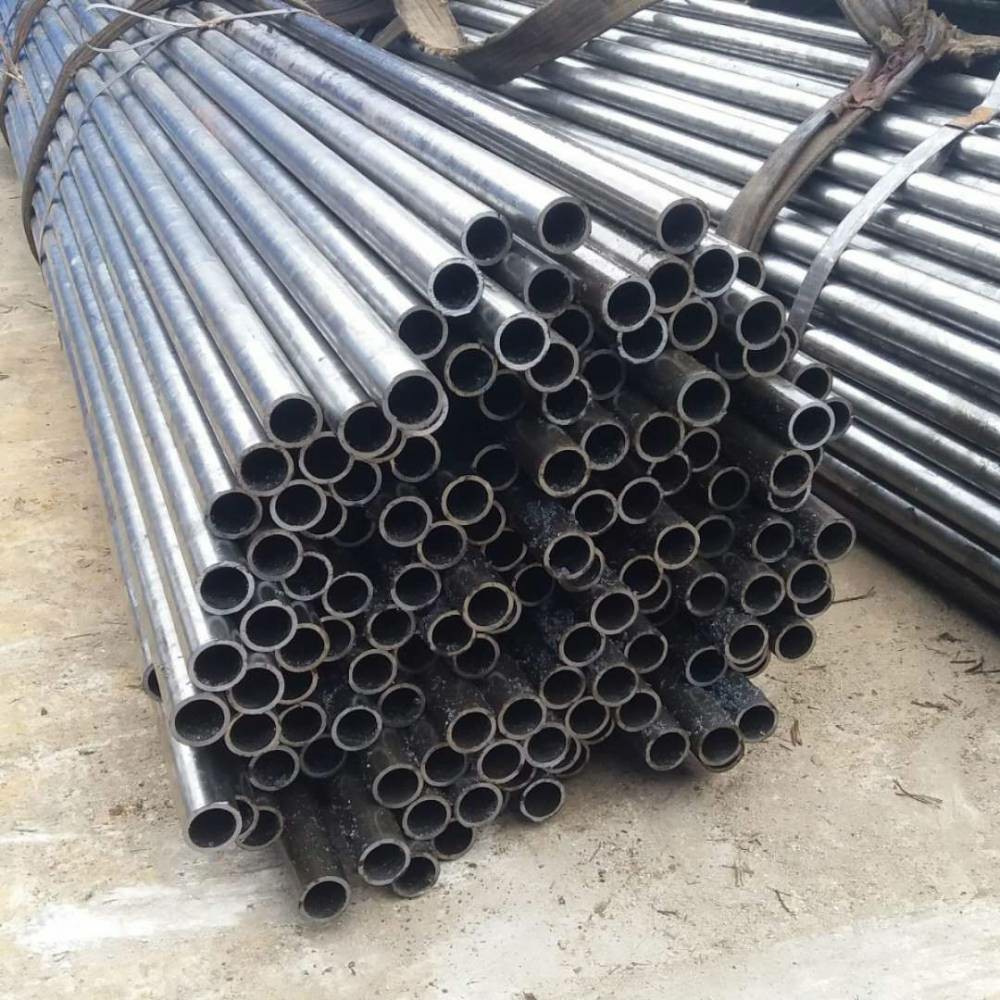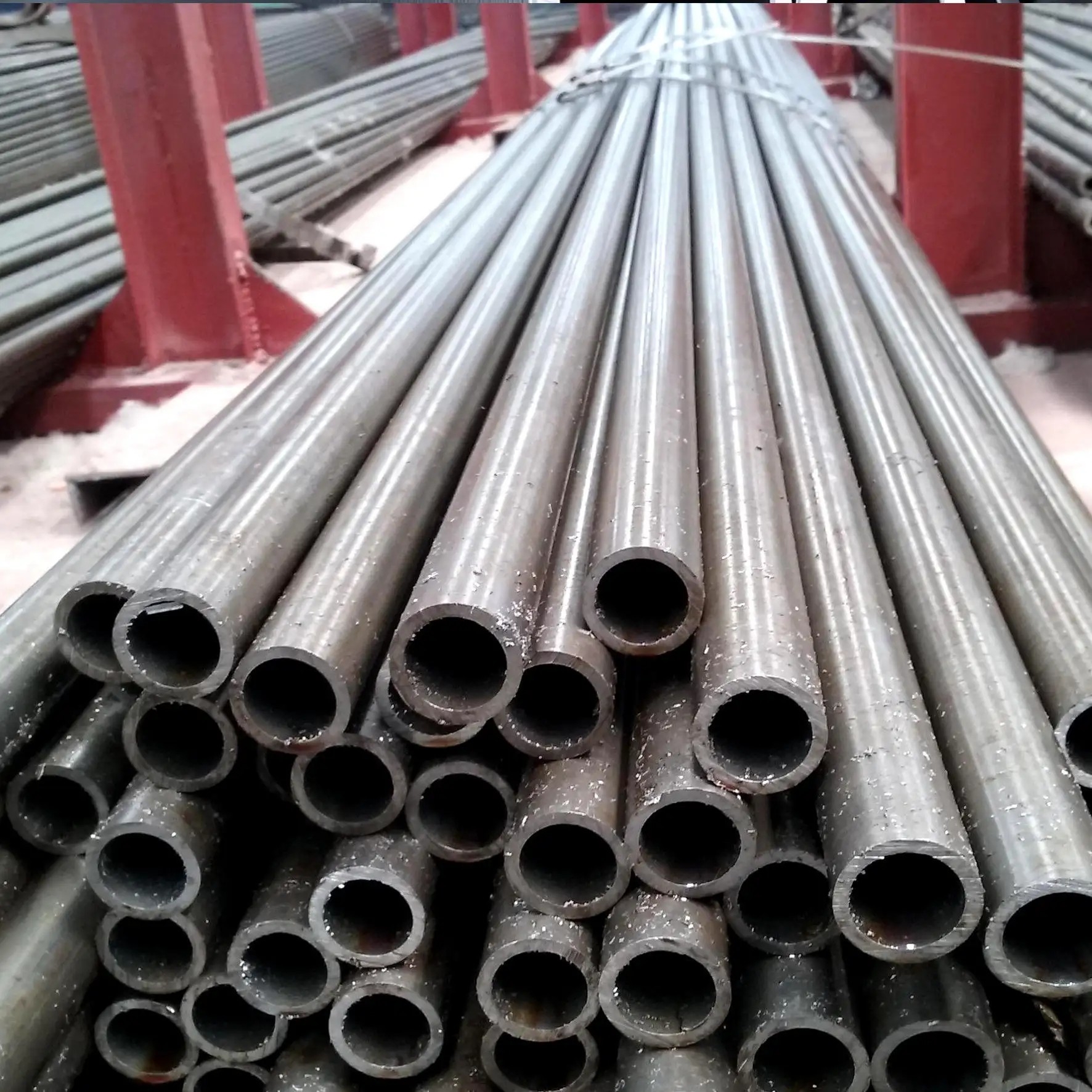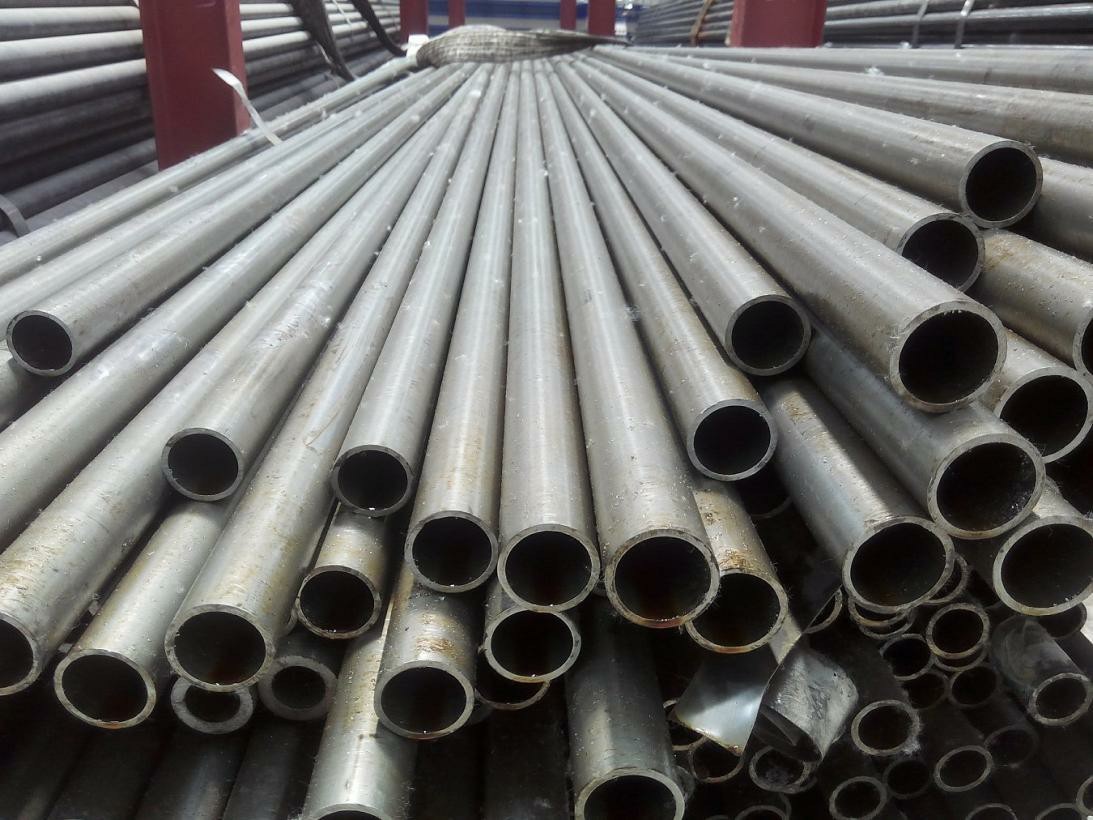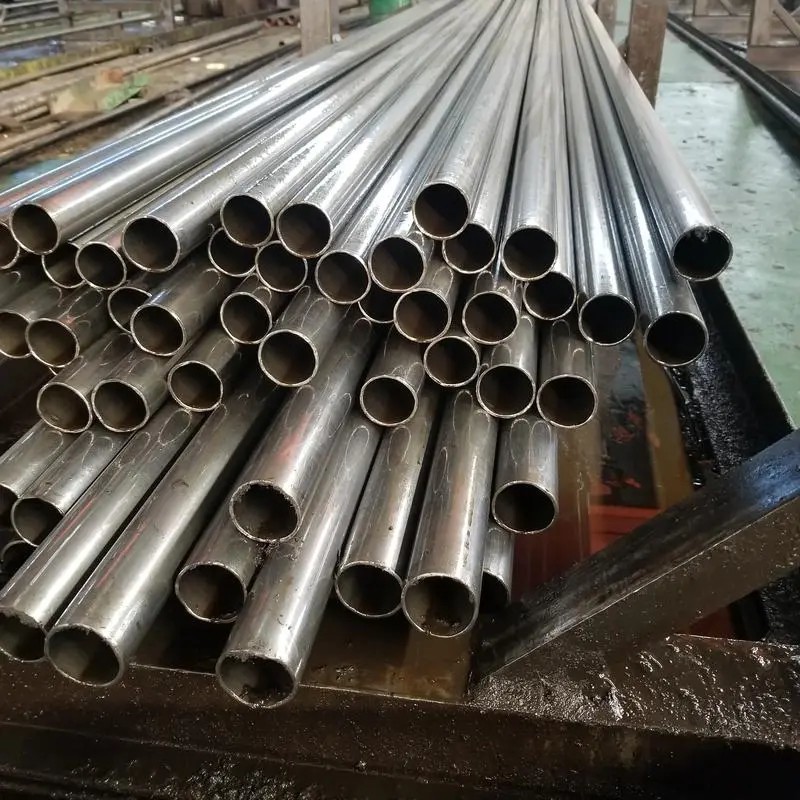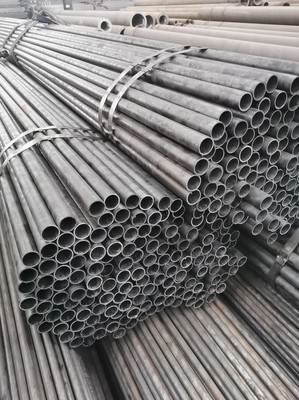High end precise steel pipe
Keywords:
Classification:
Product Introduction
features of precise steel pipe
1. Smaller outer diameter.
2. High precision and can be produced in small batches
3. Cold-drawn finished products have high precision and good surface quality.
4. The cross-sectional area of the steel pipe is more complex.
5. The steel pipe has better performance and the metal is denser. 1. Manufacturing method
According to different production methods, it can be divided into hot-rolled pipes, cold-rolled pipes, cold-drawn pipes, extruded pipes, etc.
1.1. Hot-rolled seamless pipes are generally produced on automatic pipe rolling units. The solid pipe billet is inspected and surface defects are removed, cut into the required length, centered on the end face of the perforated end of the pipe billet, and then sent to the heating furnace for heating and perforated on the perforator. While perforating, it rotates and moves forward continuously. Under the action of the rollers and the head, a cavity is gradually formed inside the pipe billet, which is called a rough pipe. Then it is sent to the automatic pipe rolling machine for further rolling. Finally, the wall thickness is evened by the leveling machine, and the size is determined by the sizing machine to meet the specification requirements. Using a continuous pipe rolling unit to produce hot-rolled seamless steel pipes is a more advanced method.
1.2. If you want to obtain seamless pipes with smaller size and better quality, you must use cold rolling, cold drawing or a combination of the two methods. Cold rolling is usually carried out on a two-roll rolling mill, and the steel pipe is rolled in a ring-shaped hole composed of a variable-section circular hole groove and a stationary conical head. Cold drawing is usually carried out on a single-chain or double-chain cold drawing machine of 0.5-100T.
1.3. The extrusion method is to place the heated tube blank in a closed extrusion cylinder, and the perforating rod moves with the extrusion rod to extrude the extruded part from a smaller die hole. This method can produce steel pipes with smaller diameters.
2. Uses
2.1. Seamless pipes are widely used. General-purpose seamless pipes are rolled from ordinary carbon structural steel, low-alloy structural steel or alloy structural steel, with the largest output, and are mainly used as pipes or structural parts for conveying fluids.
2.2. According to different uses, they are supplied in three categories: a. Supply according to chemical composition and mechanical properties; b. Supply according to mechanical properties; c. Supply according to water pressure test. Steel pipes supplied in categories a and b, if used to withstand liquid pressure, must also be subjected to water pressure tests.
2.3. Seamless pipes for special purposes include seamless pipes for boilers, seamless pipes for geology, and seamless pipes for petroleum.
3. Types
3.1. Seamless steel pipes can be divided into hot-rolled pipes, cold-rolled pipes, cold-drawn pipes, extruded pipes, etc. according to different production methods.
3.2. According to the appearance, there are round pipes and special-shaped pipes. In addition to square pipes and rectangular pipes, special-shaped pipes also include elliptical pipes, semicircular pipes, triangular pipes, hexagonal pipes, convex pipes, plum-shaped pipes, etc.
3.3. According to different materials, they are divided into ordinary carbon structural pipes, low-alloy structural pipes, high-quality carbon structural pipes, alloy structural pipes, stainless pipes, etc.
3.4. According to special purposes, there are boiler pipes, geological pipes, petroleum pipes, etc.
4. Specifications and appearance quality
Seamless pipes are specified in GB/T8162-87
4.1. Specifications: hot-rolled pipes with an outer diameter of 32 to 630 mm. Wall thickness 2.5~75mm. Cold rolled (cold drawn) tube outer diameter 5~200mm. Wall thickness 2.5~12mm.
4.2. Appearance quality: There shall be no cracks, folds, rolling folds, delamination, hairline and scar defects on the inner and outer surfaces of the steel pipe. These defects should be completely removed, and the wall thickness and outer diameter shall not exceed the negative deviation after removal.
4.3. The two ends of the steel pipe should be cut into right angles and burrs should be removed. Steel pipes with a wall thickness greater than 20mm are allowed to be cut by gas cutting and hot sawing. The head can also be cut without agreement between the supply and demand parties.
4.4. The "Surface Quality" of cold drawn or cold rolled precision seamless steel pipes refers to GB3639-83.
5. Chemical composition inspection
5.1. The chemical composition of domestic seamless pipes supplied according to chemical composition and mechanical properties, such as 10, 15, 20, 25, 30, 35, 40, 45 and 50 steels, shall comply with the provisions of GB/T699-88. Imported seamless pipes shall be inspected according to the relevant standards specified in the contract. The chemical composition of 09MnV, 16Mn, and 15MnV steels shall comply with the provisions of GB1591-79.
5.2. For specific analysis methods, refer to the relevant parts of GB223-84 "Chemical Analysis Methods for Steel and Alloys".
5.3. For analysis deviations, refer to GB222-84 "Allowable Deviations of Chemical Composition of Chemical Analysis Samples and Finished Products for Steel".
6. Physical Property Inspection
6.1. Domestic seamless pipes supplied according to structural performance, ordinary carbon steel is manufactured according to Class A steel of GB/T700-88 (but the sulfur content must not exceed 0.050% and the phosphorus content must not exceed 0.045%), and its mechanical properties shall comply with the values specified in the table of GB8162-87.
6.2. Domestic seamless pipes supplied according to water pressure test must ensure the water pressure test specified in the standard.
6.3. The physical property inspection of imported seamless pipes shall be carried out according to the relevant standards specified in the contract.
7. Main import and export situation
7.1. The import volume of general seamless pipes is large. The main importing countries are Germany and Japan. European countries such as Romania, Russia, Switzerland, France, Spain, Czech Republic, Yugoslavia, Hungary and other countries have imported. There are also small amounts imported from Argentina, Mexico and other countries in South America.
7.2. According to the different requirements of the user, there are more than 100 specifications of imported seamless pipes. The common specifications are 15922mm, 1595mm, 15918mm. 114.38mm, 114.310mm, 114.313mm. The length is generally 5-8m or 4-7m. It is mainly hot-rolled carbon structure, ST65. The smallest diameter of the imported specifications is 305mm and the largest is 47813mm.
7.3. A small amount of seamless pipes with smaller diameters and thinner walls have been imported from France and Spain, such as 183mm, 223mm, 26.93mm, etc. The general rules of the German Mannesmann Steel Pipe Factory are implemented.
7.4. Seamless pipes imported from Hungary and Japan are often referred to DIN2448 and DIN1629.
7.5. In import claims cases, the quality problems of imported seamless pipes mainly include: unqualified chemical composition, splitting in flattening test, low tensile strength, severe rust and pits, etc.
Product Message
Related Products


